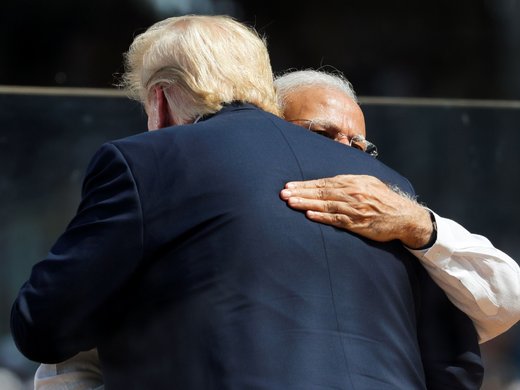Previous posts in this series have discussed the relaxation of the one-child policy and have used the simple Solow growth model to think about long-term growth. There can be no denying that the Chinese authorities have been extraordinarily successful thus far in managing the transition to a market-based economy. The growth 'miracle' has raised living standards for millions of Chinese and extended the reach of development further and further into the hinterlands. Moreover, the Millennium Development Goal of reducing global poverty – measured by those living under $1 per day – was achieved as a result of China's success.
It is difficult to overstate the importance of China’s continued progress.
All that being said, it is equally clear that the authorities in Beijing face enormous challenges. Double-digit growth rates can't continue forever. And, however successful the Chinese authorities have been in managing economic reforms, the reform process is, I think, unbalanced: markets have been liberalized, allowing greater flexibility and relaxing state controls, but political reforms have not proceeded at the same pace.
Here's the rub: as the reach of markets has increased, so too have the economic risks. When resources are allocated by fiat according to the latest economic plan, clarity of policy intentions and accountability for execution is not important. But if you give individual citizens greater economic freedoms, including relaxing capital controls, they will demand greater accountability of policy actions. Moreover, foreign investors with options to invest elsewhere will look for greater transparency of policy frameworks so that they can better assess risk in an uncertain world.
My thesis is that the international financial institutions, which have been instrumental in China's 30 glorious years of growth, can similarly assist China meet the challenges it faces in continuing its development process. First, consider how the international architecture has helped China achieve the high growth rates of the past. As noted in the previous post, these growth rates were achieved, at least in part, because after thirty years of financial and economic autarky the authorities opened the economy to foreign investment and trade. Make no mistake, it was undoubtedly a tightly-controlled opening. Regardless, it enabled China to gain access to foreign capital and foreign technology. For example, when Proctor and Gamble opened a plant, the company didn't use Chinese engineering and management technology — it brought U.S. technology and Harvard Business School management. That fact allowed China to move to the frontier of the latest technology. (Think of the production possibility curve shifting out.)
But that foreign direct investment was risky. We are, after all, talking about a centrally-planned economy in which private property and contract enforcement was, well, not necessarily favored by the central authorities. What gave foreign firms "comfort" that their long-term bets would pay off? While I have no expertise in the issue, I suspect part of the answer is corruption that aligned the incentives of officials with those of the firms: officials would be loath to kill the goose that laid the golden egg through capricious and arbitrary actions. However, that explanation is inadequate. Foreign firms wouldn't have had the resources to pay for the lubricant of such fees if they were unable to export to other markets or surely wouldn't have made the initial investment absent some assurance that their investments would be protected from arbitrary confiscation.
This is where the international architecture comes in. Trade stands at the heart of China's success. By acceding to the World Trade Organization (WTO), China committed to a whole series of measures that reduced the Knightian uncertainty faced by foreign investors — risks remained, of course, but the external commitments and monitoring by the WTO reduced "tail risks." To be sure, there was FDI into China before the WTO agreement, but investment flows accelerated markedly afterwards.
The quid pro quo for these commitments was access to markets, particularly in advanced economies whose consumers would absorb the tidal wave of products coming from Chinese factories. This access, meanwhile, gave foreign firms the confidence that their investments would yield adequate returns to compensate for the increased risks associated with an investment in China compared to, say, in the United States.
At the same time, loans from the World Bank and Asian Development Bank played a critical role. Developments in growth theory over the past 30 years have focused, in part, on the importance of public infrastructure in facilitating economic activity (and sustaining growth over time). Over the past three decades the development banks have investment heavily in China's infrastructure. And they have leveraged their expertise to assist the authorities in developing stronger policy frameworks. Of course, as witnessed by the historic decision to found an infrastructure bank to financial Asian development, China's need for such lending has fallen as it has developed.
The third leg of the stool on which China's remarkable development has been based is the International Monetary Fund. Engagement with the IMF has provided the authorities with expertise and technical assistance on monetary, financial, and fiscal policies. In some respects, however, the importance of the IMF has been in what hasn't happened as opposed to the actual outcome.
Let me explain.
As a member in good standing with the IMF, China secured certain protections against potential harmful actions of others. In another era, some countries might have been tempted to impose tariffs on imports of Chinese goods once the power of the Chinese export-led growth machine became obvious. Advanced countries that provided the export markets for Chinese manufacturing capacity suffered large deteriorations in their trade balances with China. These trends had real effects — ask steel workers in Pittsburg or Hamilton who lost their high-paying union jobs. Trade is about wealth creation. But that process isn't without disruption and distribution effects. If the "losers" aren't compensated from the increased incomes of the "winners," a political backlash is likely.
Countries adversely affected by such effects and without international obligations might be tempted to 'defect' from the good equilibrium of a system of open international trade and payments that has served the global economy for the past 70 years. At the core of this system founded in a sleepy train stop in New Hampshire – Breton Woods – is the IMF. The Fund was designed to assist its members adjust to external shocks smoothly, gradually over time so that they would eschew (in Keynes' evocative language) "measures destructive of national and international prosperity." In other words, the IMF was the institutional mechanism for supporting the cooperative equilibrium of open markets and orderly settlement of payments imbalances.
The Bretton Woods system was founded on the wreckage of the global economic collapse of the 1930s and the destruction of war. And, by monitoring its members' exchange rate (and other) policies, its founders hoped to avoid the disruptive experiences of the 1930s, during which tariffs intended to protect domestic employment were raised time and again, triggering beggar-thy-neighbor effects and retaliatory tariffs. In the end, global trade flows collapsed and all were harmed.
China's integration could have been the trigger for renewed protectionism. But as long as it adhered to its WTO commitments and "played by the rules" with respect to its macroeconomic policies (monitored by the IMF) countries wishing to impose tariff or non-tariff barriers to Chinese exports risked themselves being called "offside."
This is only part of the story; indeed, probably a lesser part. The risk of punitive tariffs against Chinese imports was likely greatly mitigated by the integrated nature of global supply chains. More important, but less tangible, is the signaling effect that engagement with the IMF provided. As long as China remained a member in good standing, foreign investors had confidence that the authorities were broadly "on track" with reforms that over time would generate growth and the stability needed to make investments in China a profitable venture. The Chinese authorities may have bristled under the watch of the IMF and undoubtedly disagreed with the Fund's analysis from time to time. But the tradeoff, in terms of the credibility and confidence effects engagement with the Fund provided, was worth the occasional discomfort.
If there is a model for how China's remarkable process of development should unfold it would be found in Germany's "Wirtschaftswunder" and Japan's equally-remarkable recovery from the devastation of war in the 1950s and 1960s which the Chinese growth 'miracle' mirrors so closely. But, if there is cause for pessimism, it is in the fact that the reform process is unbalanced; the larger that China becomes, the greater the need for transparency and clarity of policy frameworks. This is a point that I first raised four years ago.
I suspect that some of the turbulence in financial markets following the realization that, yes, China is slowing, reflects these considerations in The New Age of Uncertainty.


